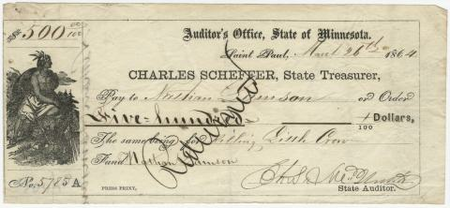This policy and others like it were part of a larger, tragic pattern of violence, displacement, and genocide against Native American populations throughout the history of the United States. The (R)ecent (R)evisionism is clearly intended to normalize such behavior in the current era. Any who deny this history should be ashamed of themselves and deemed unfit for public office.
1. California (1850s-1860s):
During the California Gold Rush, the state of California engaged in systematic violence against Native Americans. The California state legislature passed laws that funded militia campaigns against Indigenous populations and offered bounties for their scalps. During that time, there were instances where state and local governments, as well as private individuals, offered bounties for the scalps, heads, or other body parts of Native Americans. These bounties were sometimes paid by state governments, including California, as part of efforts to remove Indigenous populations from areas desired by settlers. Between 1850 and 1863, California paid out over $1.5 million for the hunting and killing of Native Americans, encouraging widespread violence against Indigenous communities.
Example: The Act for the Government and Protection of Indians (sic, and sick, 1850) allowed for the capture and enslavement of Native Americans, and subsequent amendments enabled the payment of bounties for their killings. This was formalized through state-sanctioned expeditions, with payments issued for each Native American killed.
2. Minnesota (1862):
During the Dakota War of 1862, the state of Minnesota also offered bounties for the killing of Dakota people.
Example: Governor Alexander Ramsey of Minnesota declared in September 1862 that "the Sioux Indians of Minnesota must be exterminated or driven forever beyond the borders of the state." He offered a bounty of $25 for every Dakota scalp brought in by citizens.
Bounty Payments: The Minnesota government paid out bounties for Dakota scalps as part of its efforts to remove the Dakota people from the state, leading to widespread violence and displacement. (Illustration)
3. Plymouth Colony (1675-1676):
During King Philip's War, the colonial government of Plymouth Colony offered bounties for the scalps of Wampanoag people and their allies.
Example: In 1675, the colony offered 30 shillings for every scalp of an Indigenous person. This bounty system was part of the broader conflict between Native American tribes and English settlers, leading to significant bloodshed.
These examples reflect a broader pattern of state-sponsored violence against Indigenous peoples in the United States, driven by the desire to remove them from lands coveted by settlers and to suppress resistance to colonization. The use of bounties was one of the most extreme and brutal methods employed in this campaign.

